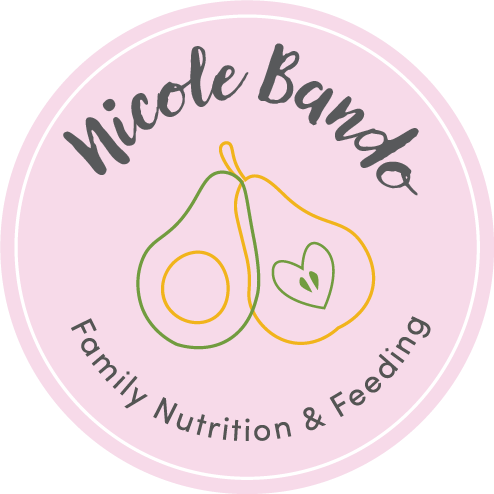Nicole Bando | Dietitian & Lactation Consultant
Search by typing & pressing enter
Search by typing & pressing enter
Search by typing & pressing enter
Nutrition and Breastfeeding Articles

‘It is hard to know what to believe with so much conflicting nutrition
information. I provide you with the latest evidence-based facts.’
Categories

Breastfeeding is a normal, learnt skill that takes time and practice.
Breastmilk provides all the nutrition your baby needs for the first 6 months of their life.
From the age of 6 months, children should begin eating safe and adequate complementary foods while continuing to breastfeed for up to 2 years and beyond (WHO, UNICEF)
What are the health benefits of breastfeeding for your baby?
- Breastmilk is the perfect food for your baby. Breastmilk is a live, biodynamic fluid that changes in accordance to your baby’s age and needs.
- Breastmilk contains all the nutrients and hydration that your baby needs in the first 6 months of their life, and includes essential factors such as antibodies, antibacterial agents, probiotics, growth factors and long-chain fatty acids to optimize the growth of your baby.
- Due to these vital nutrients that help to support your baby’s health and immune system, breastfed babies are less likely to experience illness in the first 6 months of life.
What are normal feeding patterns for a newborn?
- Frequent breastfeeding encourages good milk supply and growth in your baby.
- Babies vary in their feeding needs. Some babies may need as much as 10-15 times a day, or as few as 6-8 times in 24 hours.
- Nurse at the first signs of hunger (stirring, hand in mouth, fidgeting, squirming, fussing).
- Newborn babies should be fed every 1-3 hours.
- It is normal for your baby to lose a little weight (10% of their body weight) in the first week of life. After this, your baby should be steadily putting on weight and growing each week.
HOW DO YOU KNOW IF YOUR BABY IS GETTING ENOUGH MILK?
URINE OUTPUT (WEE)
Minimum of 5 heavy, wet nappies each day (24 hour period) after the age of five days.
Pale urine – if your baby’s urine is dark or smelly, it might mean your baby is not getting enough milk.
STOOL OUTPUT (POO)
Good-sized soft stools are expected.
Before 6-8 weeks of age, your baby should have three or more runny stools/poos a day.
After this age, it is quite normal for your baby to poo less often, even every 7-10 days.
When your baby poos, there should be a large amount of soft or runny poo.
GROWTH
Your baby is gaining a good amount of weight, and growing in length and head circumference. Your baby is meeting their developmental milestones.
APPEARANCE
Your baby is fitting into their skin, and has good skin colour and muscle tone.
Your baby is alert and is mostly happy after feeds.
- You cannot overfeed a breastfed baby, but you can underfeed your baby.

What do you do if you think your baby isn’t getting enough milk?
- The best way to increase your baby’s intake and your milk supply is to feed more often.
- It is important to let your baby finish the feed on their own and come off the breast by themselves, this will mean that baby is taking the most milk out of the breast as they would like.
- Have you only been offering one breast every feed? Some babies only need one breast, but other babies need both. You could try offering the second breast and see if your baby takes it.
- Is your baby sleeping longer at night? Long nights sleep can mean missed feeds, which can reduce milk supply, baby’s milk intake and weight gain. You might consider waking your baby up for a feed during the night.
- Is your baby attaching and sucking effectively? Babies with poor sucking action may not be capturing enough milk from the breast. An appointment with a Lactation Consultant can help you learn how to position your baby.
Breastfeeding should be an enjoyable and rewarding bonding process for both Mother and Baby.
Breastfeeding effectively does take time and practice as it is a learning process for both Mother and baby.
References:
- Stuebe A. (2009) The risks of not breastfeeding for mothers and infants. Rev Obstet Gynecol.;2(4):222-231. Accessed June 7th 2021. Available from: https://www.ncbi.nlm.nih.gov/pmc/articles/PMC2812877/?itool=EntrezSystem2.PEntrez.Pubmed.Pubmed_ResultsPanel.Pubmed_SingleItemSupl.Pubmed_DiscoveryDbLinks&ordinalpos=1&tool=pubmed
- Bonyata K. (2018). Is your baby getting enough milk? Kelly Mom. Accessed June 10th 2021. Available from: https://kellymom.com/bf/got-milk/supply-worries/enough-milk/
- Bonyata K. (2018). Breastfeeding your newborn – what to expect in the early weeks. Kelly Mom. Accessed June 10th 2021. Available from: https://kellymom.com/hot-topics/newborn-nursing/
- Australian Breastfeeding Association. General Breastfeeding Information. ABA, 2020. (Available from: https://www.breastfeeding.asn.au/, accessed May 31st, 2021).
- Raising Children (2021). Breastmilk and breastfeeding: benefits. The Australian Parenting Website. Accessed June 10th 2021. Available from: https://raisingchildren.net.au/newborns/breastfeeding-bottle-feeding/about-breastfeeding/breastmilk-breastfeeding-benefits
- Eat for Health (2012). Infant feeding guidelines. NHMRC. Accessed 19th June 2021. Available from:https://www.eatforhealth.gov.au/sites/default/files/files/the_guidelines/n56b_infant_feeding_summary_130808.pdf
